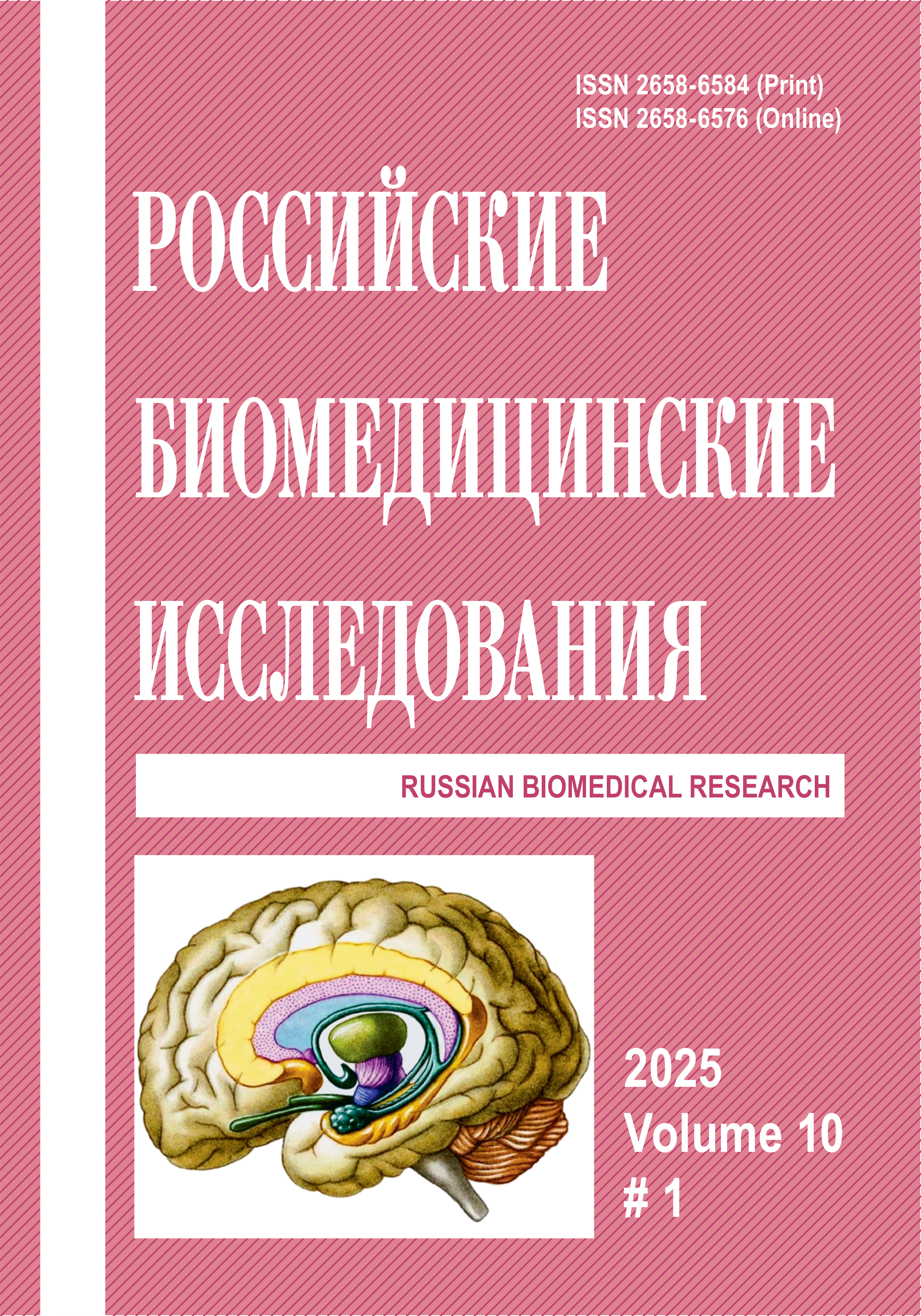FETOMETRY PARAMETERS IN PREGNANCY AFTER IN VITRO FERTILIZATION
Abstract
Introduction. Current research supports the efficacy and safety of in vitro fertilization (IVF), but questions about pregnancy and fetal development after their use continue to be relevant. Early sources claim that there is a relationship between IVF and low birth weight, premature birth, placental abruption, congenital malformations, and perinatal mortality. More recent data show that the incidence of perinatal complications is higher in women after IVF. The aim of the study was to evaluate fetometric parameters in pregnancies resulting from in vitro fertilization in the Orenburg region. Material and method. Retrospectively we studied 1333 ultrasound protocols at 11–14, 20–22, 30–34 weeks in 462 pregnant women of the first (343) and second (119) gestational periods after IVF. When analyzing screening at 11–14 weeks, we compared the crown-rump length (CRL) and nuchal translucency (NT) of fetuses in women of two age groups. The second and third screens looked at averages the mean biparietal diameter (BPD), occipitofrontal diameter (OFD), head circumference (HC) and abdominal circumference (AC) and femur length (FL) in fetuses from women of the two age periods and according to sex were compared, as well as the growth intensity of the above parameters depending on the sex of the fetus and the age period of the mother. Results. The study showed that at the first screening, the mean CRL of the fetus was not statistically significantly different between the two groups, while the mean value of the nuchal NT was significantly higher in fetuses of second gestational age women. When comparing the fetometric parameters obtained at the second screening, there was a significant difference in OFD in fetuses of women of the two age periods. When comparing the studied fetometric parameters depending on the sex of the fetus, significant differences were found in a greater direction for male fetuses. Conclusion. Thus, fetometry revealed uneven growth of the studied parameters from the intermediate to late fetal period, including depending on the sex of the fetus and the age of the mother.
References
Boostanfar R., Shapiro B., Levy M., Rosenwaks Z., Witjes H., Stegmann B.J., Elbers J., Gordon K., Mannaerts B. Pursue investigators. Large, comparative, randomized double-blind trial confirming noninferiority of pregnancy rates for corifollitropin alfa compared with recombinant follicle-stimulating hormone in a gonadotropin-releas ing hormone antagonist controlled controlled ovarian stimulation protocol in older patients undergoing in vitro fertilization. Fertility and Sterility. 2015;104(1):94–103. DOI: 10.1016/j.fertnstert.2015.04.018.
Kamath M.S., Kirubakaran R., Mascarenhas M., Sunkara S.K. Perinatal outcomes after stimulated versus natural cycle IVF: a systematic review and meta-analysis. Reproductive BioMedicine Online. 2018;36(1):94–101. DOI: 10.1016/j.rbmo.2017.09.009.
Kalra S.K., Molinaro T.A. The association of in vitro fertilization and perinatal morbidity. Semin. Reprod. Med. 2008;26(5):423–435.
Sullivan-Pyke C.S., Senapati S., Mainigi M.A., Barnhart K.T. In vitro fertilization and adverse obstetric and perinatal outcomes. Seminars in Perinatology. 2017;41(6):345–353. DOI: 10.1053/j.semperi.2017.07.001.
Подзолкова Н.М., Скворцова М.Ю., Прилуцкая С.Г. Беременность после ЭКО: факторы риска развития акушерских осложнений. Проблемы репродукции. 2020;26(2):120–131. DOI: 10.17116/repro202026021120.
Иутинский Э.М., Железнов Л.М., Дворянский С.А., Клабукова А.О. Региональные показатели фетометрии плода: анализ и интерпритация. Оренбургский медицинский вестник. 2024;2(46):37–43.
Медведев М.В. Пренатальная эхография. Дифференциальный диагноз и прогноз. М.: Реал Тайм; 2016.
Медведев М.В., Алтынник Н.А., Романова А.Ю., Потапова Н.В. Мультицентровое исследование «Дородовая диагностика синдрома Дауна в регионах России в 2005–2020 гг.». Эффективность и динамика пренатального обнаружения. Пренатальная диагностика. 2022;21(1):19–27. DOI: 10.21516/2413-1458-2022-21-1-19-27.
Железнов Л.М., Никифорова С.А., Леванова О.А. Особенности региональных показателей фетометрии для анатомических исследований. Восточно-Европейский научный журнал. 2016;8(2):44–47.
Леванова О.А. Конституциональные особенности беременных и фетометрия — закономерности и прикладные аспекты. Автореф. дис. … канд. мед. наук. Оренбург; 2017.
Железнов Л.М., Леванова О.А., Никифорова С.А. Фетометрия и индивидуальная анатомическая изменчивость плода. Морфология. 2018;153(3):105–105a.
Штах А.Ф. Оценка показателей ультразвуковой фетометрии у беременных Пензенской области. Поволжский регион. Медицинские науки. 2017;1(41):47–56. DOI: 10.21685/2072-3032-2017-1-5.
Broere-Brown Z.A., Baan E., Schalekamp-Timmermans S. et al. Sex-specific differences in fetal and infant growth patterns: a prospective population-based cohort study. Biol Sex Differ. 2016;7:65. DOI: 10.1186/s13293-016-0119-1.
Луцай Е.Д., Железнов Л.М. Интенсивность роста соматометрических параметров плода в разные периоды пренатального онтогенеза. Астраханский медицинский журнал. 2012;7(4):168–170.
Copyright (c) 2025 Russian Biomedical Research

This work is licensed under a Creative Commons Attribution 4.0 International License.



